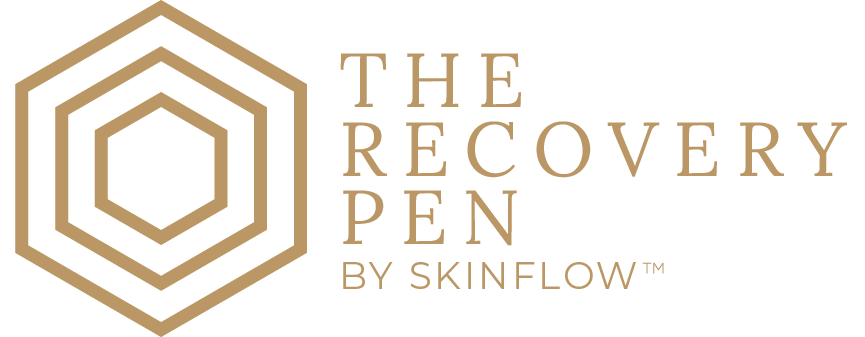Magnetic Therapy for Athletes – How The Recovery Pen™ Uses Magnetism for Safe, Natural Recovery
Magnetism has long intrigued athletes looking for non-drug, non-electrical ways to feel balanced and ready for the next session. This article explains what magnetic wellness is, what we can (and can't) say responsibly about it, and how The Recovery Pen integrates magnetism alongside far-infrared energy, acupressure, and negative ions to support comfort and recovery—without medical claims.
Important: The Recovery Pen is a wellness tool. It is not intended to diagnose, treat, cure, or prevent disease.
What Is "Magnetic Therapy"?
In the wellness world, "magnetic therapy" typically refers to static magnets placed near the body. Unlike powered devices, static magnets don't use electricity and don't emit pulses; they simply provide a steady magnetic field. People use them with the aim of supporting comfort, balance, and overall well-being.
You'll see magnets in bracelets, wraps, mattress toppers, and handheld tools. The Recovery Pen incorporates static magnets within a multimodal design—so magnetism is one supportive layer, not the whole story.
How Might Magnetism Fit into a Wellness Routine?
While the precise biological mechanisms are still being studied, many athletes use magnetism in routines designed to:
- Encourage a sense of balance and calm
- Support relaxation in overworked areas
- Complement other practices (mobility, breathwork, light stretching)
Because static magnets are passive, they're easy to add in short "micro-sessions" throughout the day.
The Recovery Pen's Multimodal Approach
What sets The Recovery Pen apart is its four-in-one, battery-free design:
- Magnetism → steady magnetic fields that support overall balance
- Far-Infrared Energy (FIR) → gentle warmth that promotes microcirculation and a relaxed feel
- 24K Gold-Tipped Acupressure → precise pressure to help ease localized tension along fascial lines
- Negative Ions → a subtle layer that can encourage post-effort calm
This layered approach supports comfort before, between, and after activity—on the course, at the gym, or while traveling.
Practical Uses for Athletes & Golfers
Pre-performance (3–5 minutes total)
Quick passes over forearms, calves, hips, and mid-back to support smooth movement.
Between efforts (30–60 seconds, as needed)
A brief tune-up on a hotspot (e.g., forearm, posterior shoulder) to help settle localized tension.
Post-session (5–10 minutes total)
Slow, comfortable passes over calves, quads, hips/glutes, and low back.
Pair with hydration and light stretching for a simple cool-down ritual.
Tip: Think small and consistent. Short, frequent sessions often feel better than occasional, long sessions.
How It Compares to Other Options
| Option | Best For | Considerations | How The Pen Complements |
|---|---|---|---|
| Foam Roller | Large muscle groups, global fascia | Bulky; less precise | Use FIR + acupressure first, then roll |
| Massage Gun | Deep percussion on big muscles | Needs charging; noisy | The Pen is quiet, pinpoint, battery-free |
| Compression | Post-effort legs or travel days | Not targeted | Add Pen locally to hips/back/forearms |
| Heat/Cold | Relaxation or cool-down | Setup/time needed | The Pen's FIR offers quick, gentle warmth |
What About the Evidence?
Interest in magnetism is high, and research results are mixed. Some users report subjective benefits; controlled studies have had varied outcomes. That's why we position The Recovery Pen as a wellness support, not a medical treatment. If you're evaluating any modality, the most honest approach is:
- Try it consistently for short sessions,
- Pair it with good habits (sleep, hydration, mobility), and
- Listen to your body (and your clinician or coach).
Safety & Sensible Use
- Non-electrical & passive: The Pen uses static magnets only.
- Comfort first: Sessions should feel gentle and easy—no pain, no pressure points.
- Implants & pregnancy: If you have a pacemaker/implant or are pregnant, consult a qualified professional before using magnetic products.
- Persistent or sharp discomfort: Check in with your healthcare professional.
Mini Protocols (General Wellness)
Rotation Ready (≈3 minutes)
45s mid-back (T-spine) → 45s each hip line → 45s posterior shoulder
Goal: smooth coil-and-uncoil.
Forearm & Wrist Focus (≈2–3 minutes)
30–45s forearm flexors → 30–45s extensors → brief passes around the wrist
Goal: comfortable grip and feel.
Travel Unwind (≈5 minutes)
1–2 min calves/soleus → 1–2 min hamstring origin → 1–2 min low-back
Goal: shake off sitting stiffness.
Why Athletes Choose The Recovery Pen
- Portable: Pocket-sized; goes anywhere
- Battery-free: No charging, no cords, no downtime
- Durable: Hand-crafted with quality materials
- Layered support: Magnetism + FIR + acupressure + negative ions
Whether you're managing daily training loads or just want a simple way to feel more balanced, the Pen fits right in your bag—and into your routine.
Magnetism is one of several low-effort, non-drug ways athletes explore to support comfort and recovery. The Recovery Pen makes it practical: add steady magnetism to gentle FIR warmth, precise acupressure, and negative ions—anytime, anywhere.
Explore The Recovery Pen → Compact. Cordless. Built for performance and recovery.




